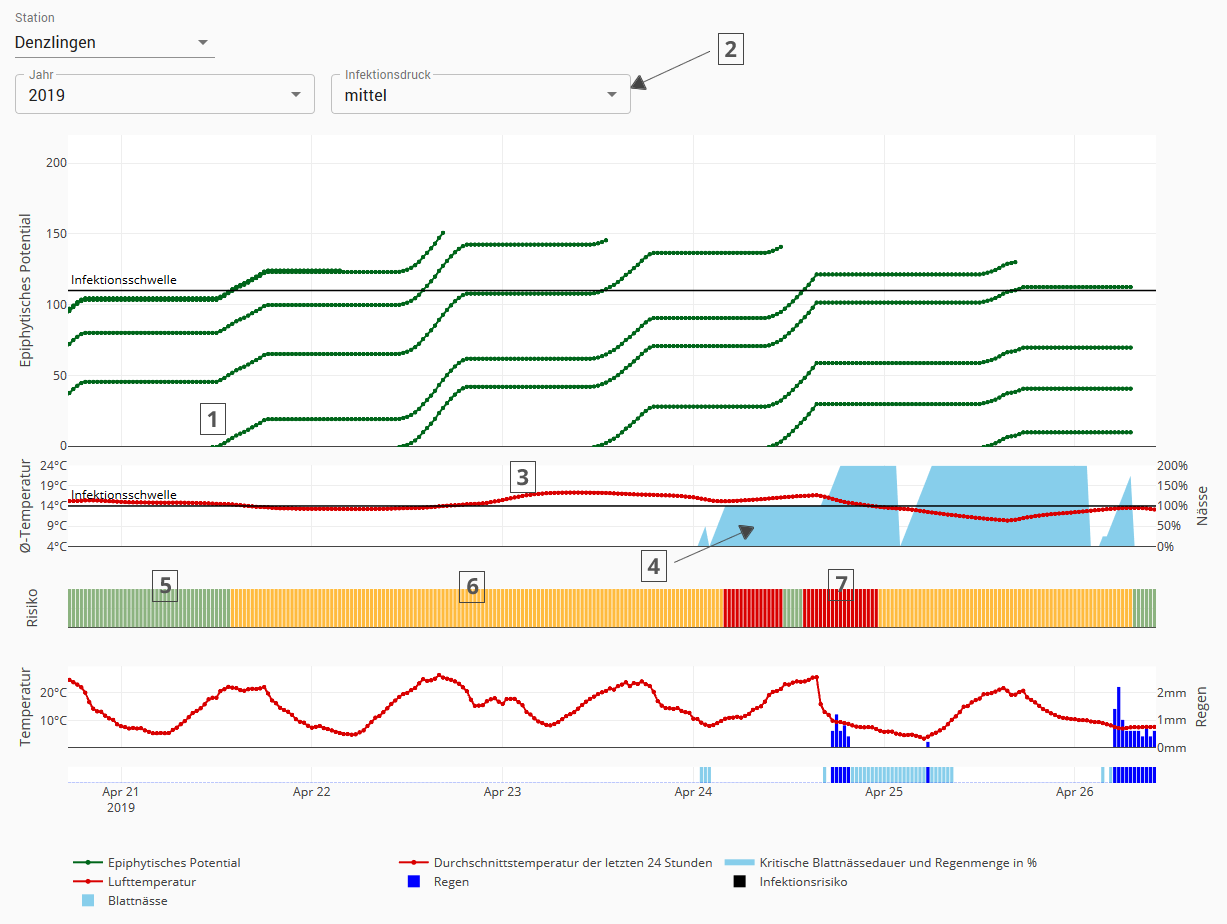Forecast model Fire blight
This model is based on the MaryblytTM model, taking into account adjustments made by Dr. Moltmann in 2010, and simulates the infection conditions for flower infections on apple and pear. The central element is the simulation of the epiphytic bacteria population on the flower organs. This is done by summing the degree hours above 18.3°C during the lifetime of the flowers (44.4 degree days > 4.4°C). The epiphytic population is represented by the green lines in the upper part of the graph. Each day with temperatures above 18.3°C during flowering a new line begins to rise [1]. It represents the flowers opening on that day. The critical infection threshold depends on the infection pressure [2]. The following gradations are made
- Low infection pressure: no fire blight in previous years
→ Infection threshold 200 - Medium infection pressure: fire blight in the previous year in conjunction with good sanitation
→ Infection threshold 110 - High infection pressure: fire blight in the previous year in connection with insufficient remediation or early sources of infection in the surrounding area
→ Infection threshold 70
If the epiphytic population reaches the infection threshold, two further conditions must be met for fire blight infection.
- The average temperature of the last 24 hours must be at least 14°C [3].
- There must be either at least 2 hours of dew or rain. In the diagram, the wetness is represented by the light blue area [4]. It is indicated in % of the critical value, i.e. at 100% and more the infection conditions are fulfilled
The risk of infection is represented in the model by the coloured risk parameter. There are three gradations.
- Green: there is no danger of infection [5].
- Orange: the epiphytic population has reached the infection threshold. Now all that is missing is wetness for an infection to occur [6].
- Red: all conditions for a flower infection were reached [7].
ATTENTION: Since both rain and dew are difficult to predict and fire blight treatments can only be carried out preventively, only the epiphytic population should be used for treatment decisions.

Literature
Moltmann, E., Herr, R 2010. Abschlussbericht zum Forschungsauftrag „Verbundvorhaben zur Bekämpfung des Feuerbranderregers im Obstbau ohne Antibiotika“, Projektteil des LTZ-S Az 06HS032, 15.08.2007 – 31.08.2010
Steiner, P.W., Lightner, G.W. 1996. MaryblytTM 4.3 A predictive program for forecasting fire blight disease in apples and pears. University of Maryland, College Park, Maryland 20742, USA.
